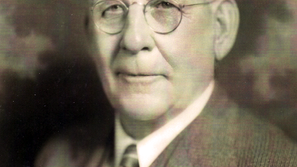First stage raised ruckus in Fresno Flats
- Bill Coate
- Sep 26, 2018
- 4 min read

Madera County Historical Society These visitors are shown traveling on the Madera to Yosemite Road in 1882, three years after the first stage traveled that route.
The very first stagecoach from Madera to the mountains set out on May 4, 1879, transporting tourists to Yosemite. On its way the stage had to stop in Fresno Flats (present day Oakhurst). The entire town turned out to give the entourage a real mountain welcome, as the long expected opening of the route from Madera brought locals almost to the point of frenzy.
Anticipation of the new stage travel through Fresno Flats began to build when the first news of the building of the Yosemite Road caused a stir in November 1877, just a year after the founding of Madera. Residents of Fresno Flats were delighted. They knew that hordes of tourists would bring economic benefit to their community. At the same time, however, the new road attracted considerable attention in the towns of Merced and Mariposa, but without the euphoria exhibited in Fresno Flats. Citizens in these latter places realized that Fresno Flats would gain at their expense.
Although the road was intended to run from Yosemite to the coast, via Madera, it never made it that far. Residents of Fresno Flats, however, did not care. Their interests lay in the eastern portion of the proposed road. By August 14, 1878, forty men were working on the upper section, which ran from Big Tree Station to Fresno Flats, and the citizenry was delighted. Every mile of new road spread smiles throughout the Flats.
On April 6, 1879, the road was completed to Madera and christened by W.M. Cooper, a civil engineer. After traveling the new route, Cooper pronounced it “a good line from end to end and a very good road to travel.” Everything was in order. Now all that was needed were the tourists.
On the morning of May 4, 1879, all of Fresno Flats turned out and met at Hunt’s Hotel. By noon, the scheduled time of arrival of the Madera stage, necks were craning, and the children grew restless, but no tourists appeared. Soon everyone in Fresno Flats was in a dither. For two more hours the crowd waited while the band, the babies, and the boozers all sought relief from the anxiety that was building. The local folks were fearful that the preparations for the huge celebration had been for naught.
Suddenly at 2:30 P.M., a shout was heard. “Here it comes!” The arriving stage set into motion the Fresno Flats celebration by “tearing down the grade.” The driver, “with a flourish and crack of the whip, drove under the American flag which had been stretched across the street.” The coach pulled up in front of Hunt’s Hotel to change horses and give the passengers a lunch break.
Down from the top of the coach jumped Henry Washburn, the owner and operator of the Yosemite Stage and Turnpike Company. He informed the crowd that the stage was late because of the newness of the road, it being “heavy and not yet settled.” Following Washburn, eleven people, including several women, disembarked and were immediately saluted with several giant powder shots.
The gunshots served as a signal to get serious about the celebration, and this the people did. A huge crowd surged around the stagecoach, almost trampling a Fresno newspaper reporter. He later noted that “the people turned out en masse,” old, young, and babies galore. “There were big babies, and little babies; light babies and dark babies, pretty babies, and ugly...moderately passable babies; babies that squalled and babies that shrieked, all displayed to the best advantage by the mamas.”
After dinner, the tourists walked out on the wooden porch to face the still jubilant crowd. It was almost as if they were the heroes and heroines. A tiny band was assembled and played a patriotic tune, although it was drowned out by the “drunken hiccoughs” of two inebriated celebrants. As the reporter scanned the crowd, he noticed that the celebration was getting a little out of hand. Two men in the crowd found themselves in disharmony of thought over the ability of one to tell the truth. The other one “got his nose smashed flat as a pancake for his insolence,” at calling his fellow townsman a liar.
While the brawl was going on and before the tourist party could board the stage again, the drunken celebrants continued their revelry. One man stepped up on the sidewalk, and staggering from post to post, declared himself to be a military man, a Commodore no less. The intoxicated man belched his way to Washburn and demanded to know where the “desperado” was hiding. When the desperado did not appear, the “Commodore” accepted the inevitable and returned to his bottle, and “some more fighting whiskey had to die a natural death.”
One by one, the visitors were hustled through the crowd and finally the stage was reloaded. The tourists drove off after giving three cheers. They had not been offended by the exuberance of the crowd. Rather, they seemed flattered by it.
Within a few months, hundreds would follow, including General U.S. Grant and President Rutherford B. Hayes. Before the end of May 1879, one hundred thirty-four tourists had followed the same route to Yosemite, but none of them even came close to receiving the same raucous reception that was given those eleven travelers who first used the Madera to Yosemite road. By that time, a stage coach arrival from the Valley was old hat.


























Comments